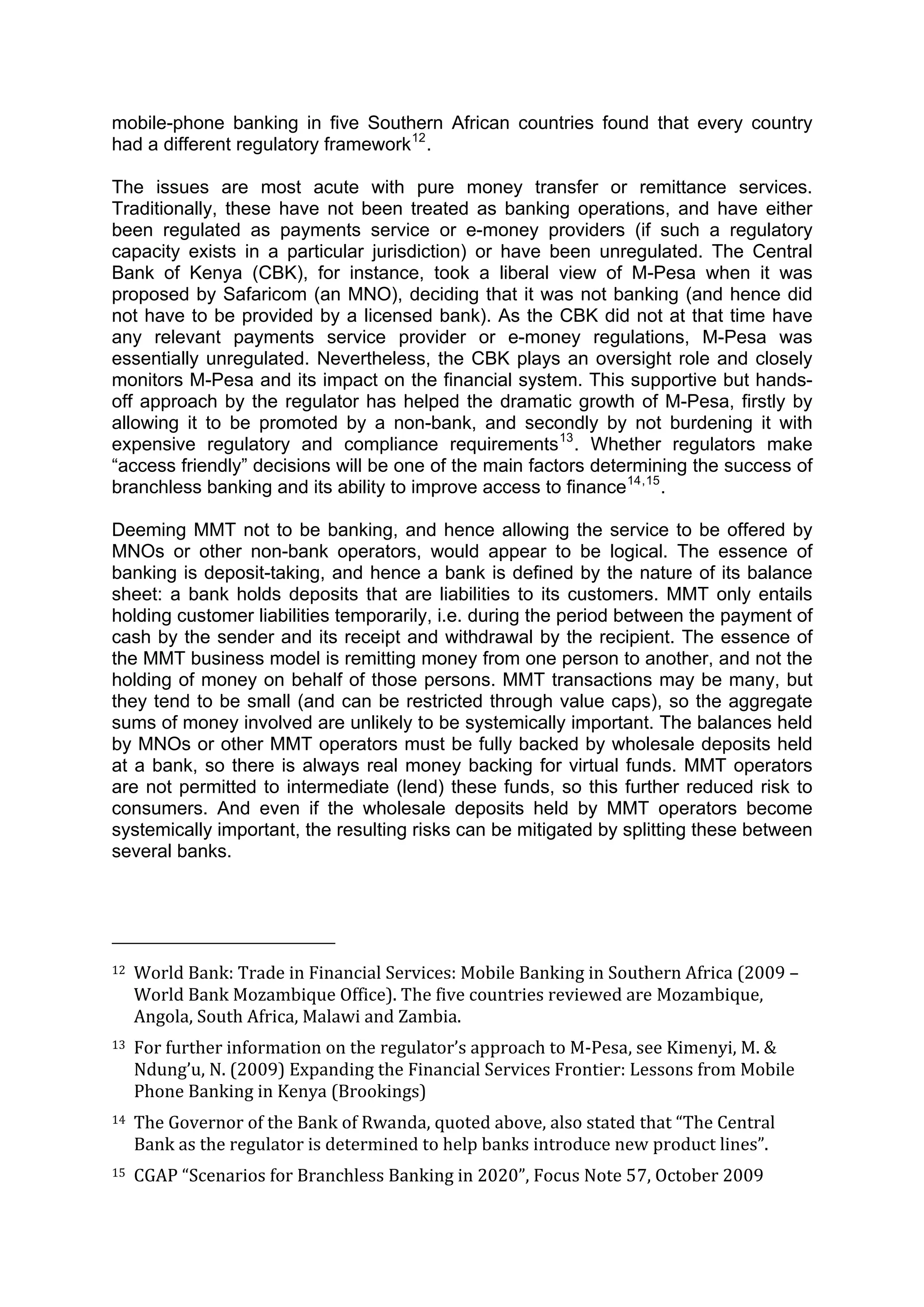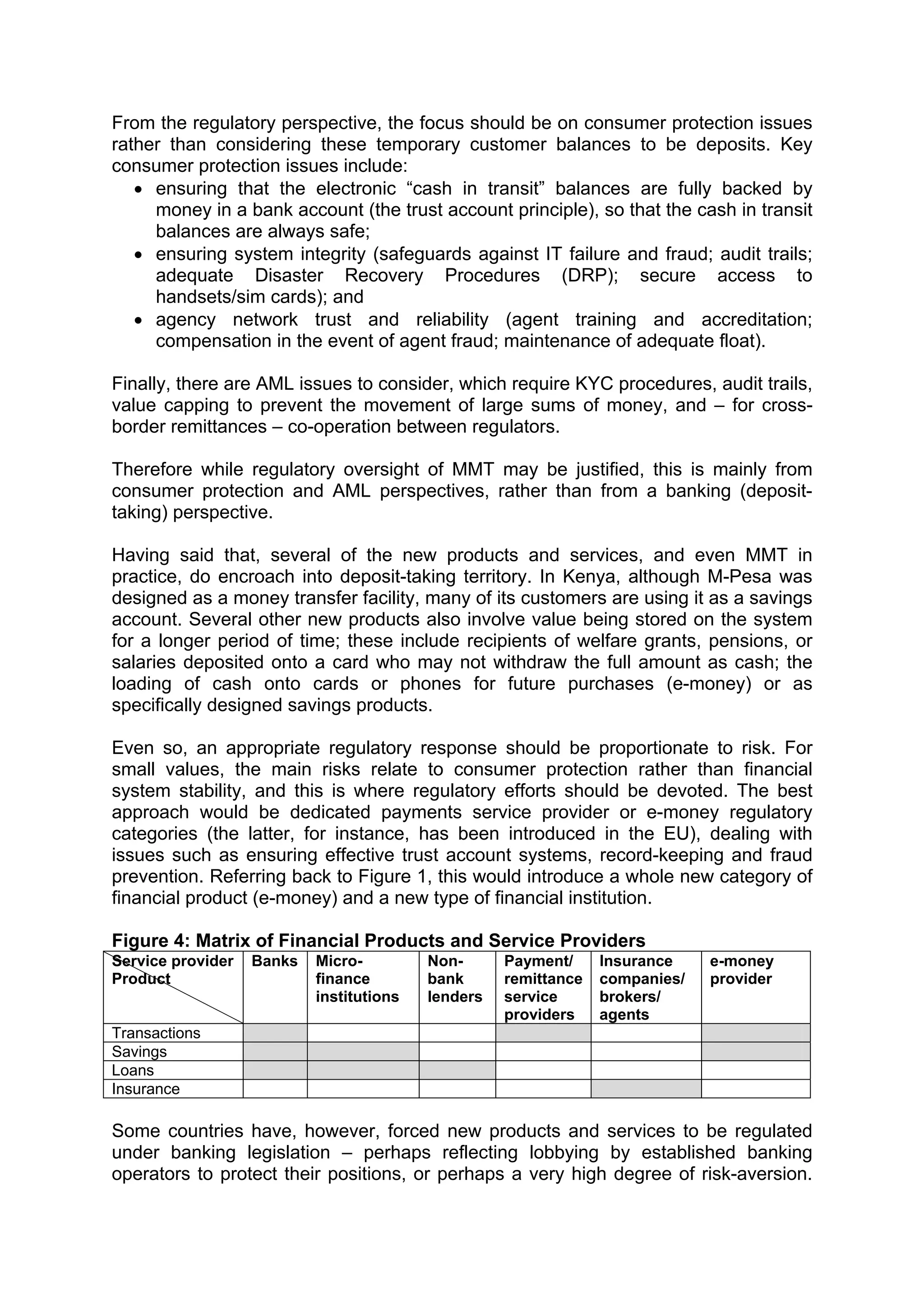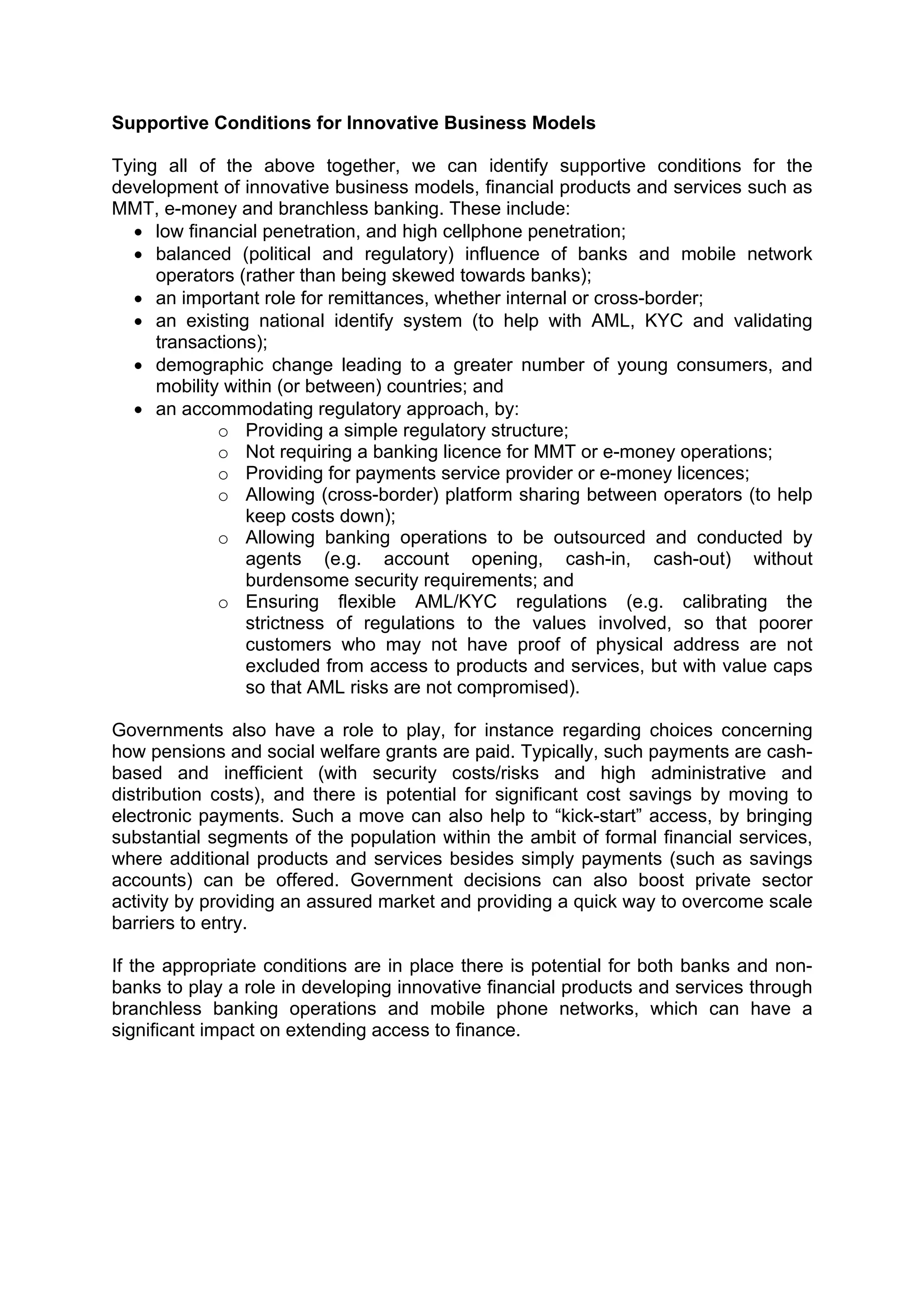This technical report discusses product innovation and access to finance in Africa. It finds that the majority of the population in sub-Saharan Africa does not have access to formal financial services like banks, inhibiting economic growth. However, innovations in mobile money transfer, e-money and mobile banking are transforming access. These innovations reduce costs and allow new distribution models. Mobile network operators are well-positioned to provide low-cost transactions through non-traditional retail points. The report argues regulators need to support innovation without inhibiting it, and ensure risks from different financial products are appropriately managed.
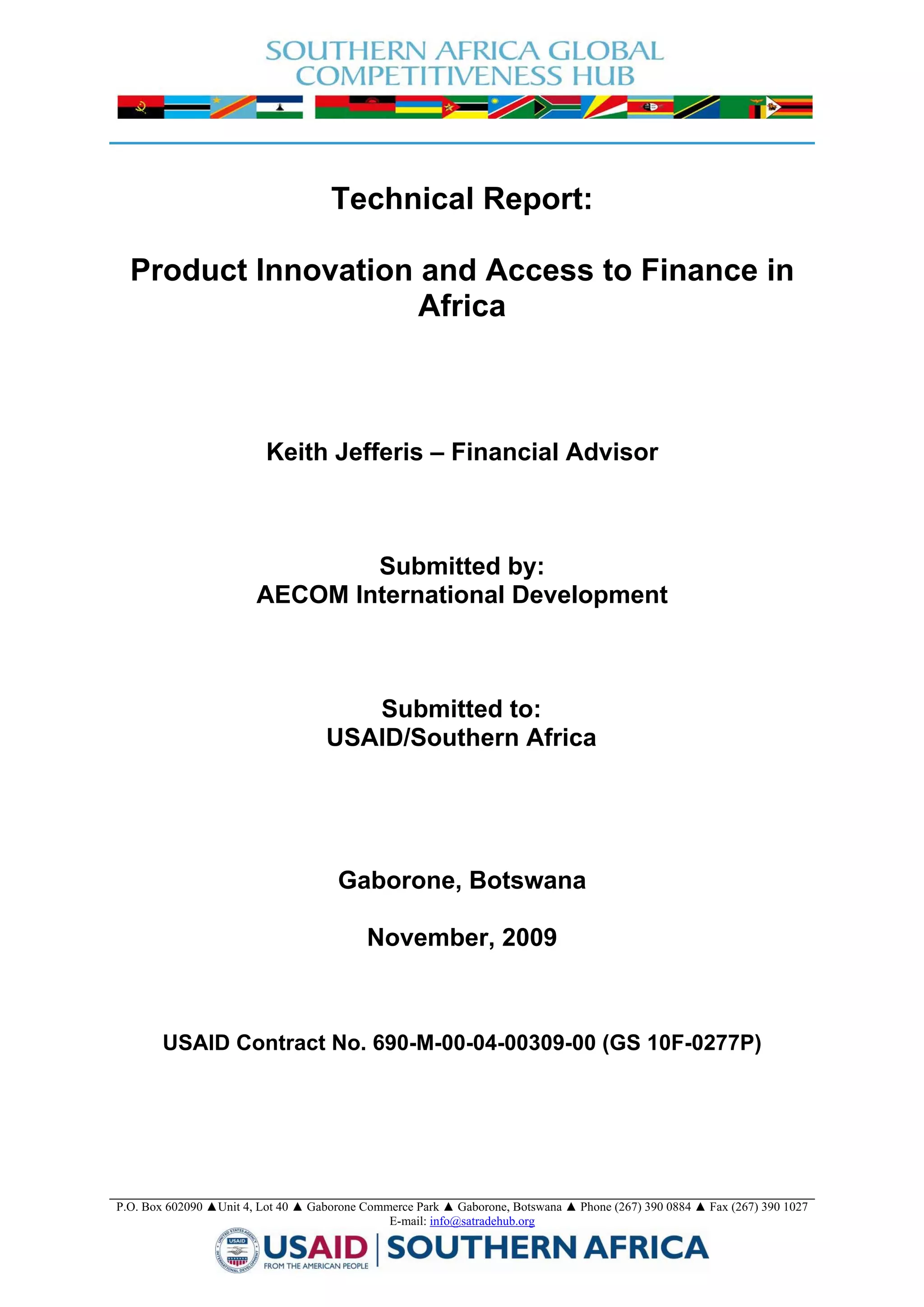
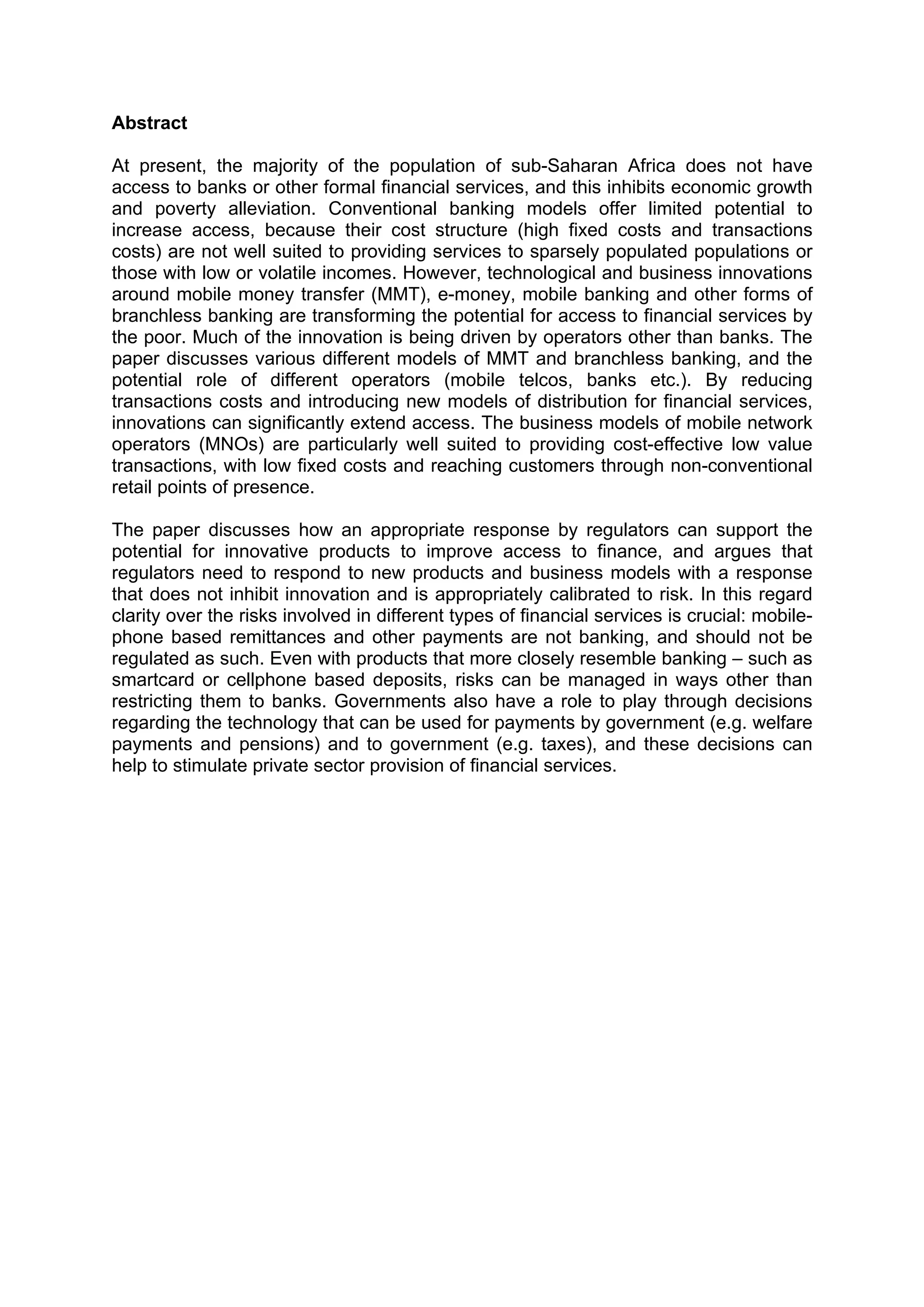
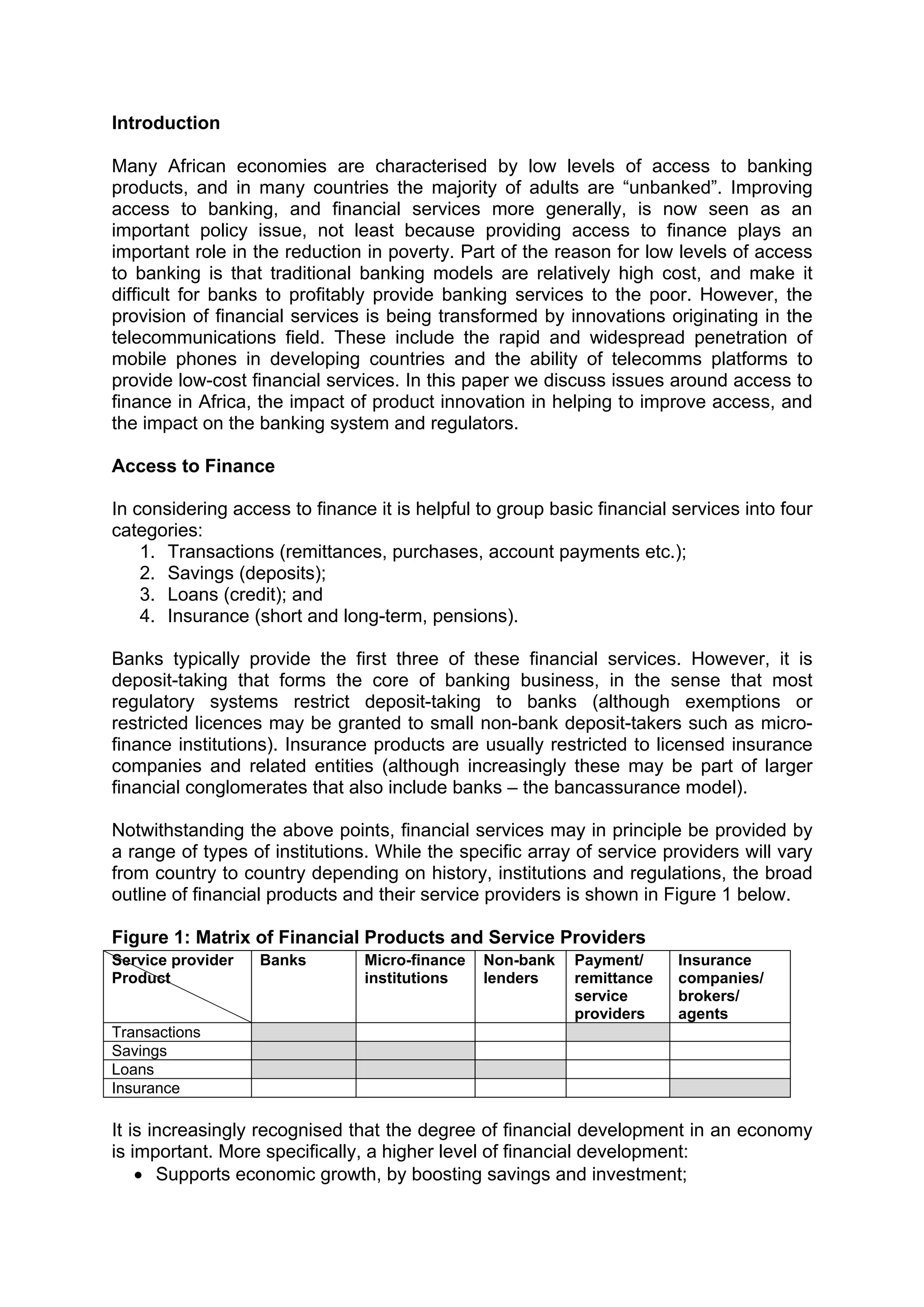
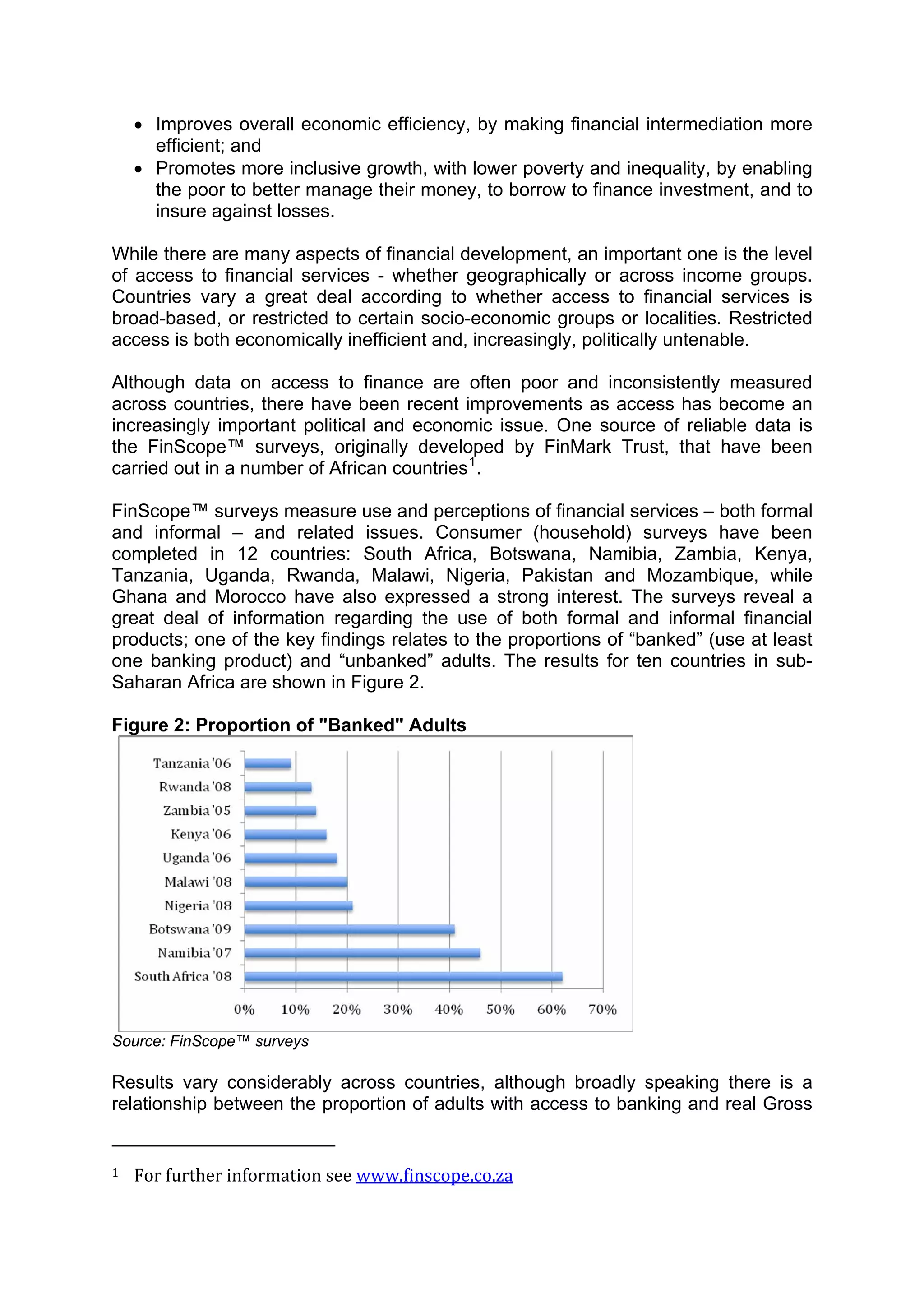
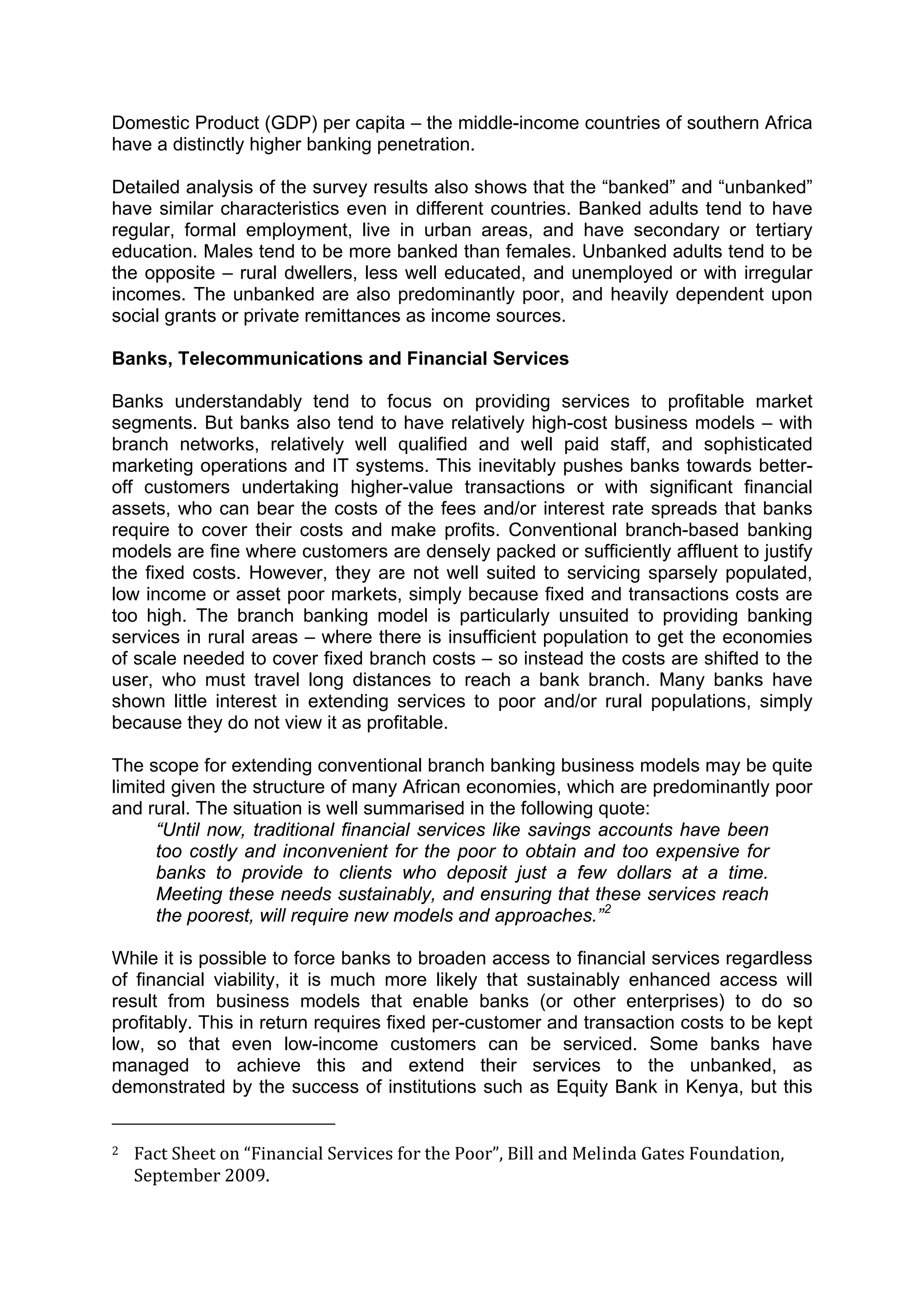
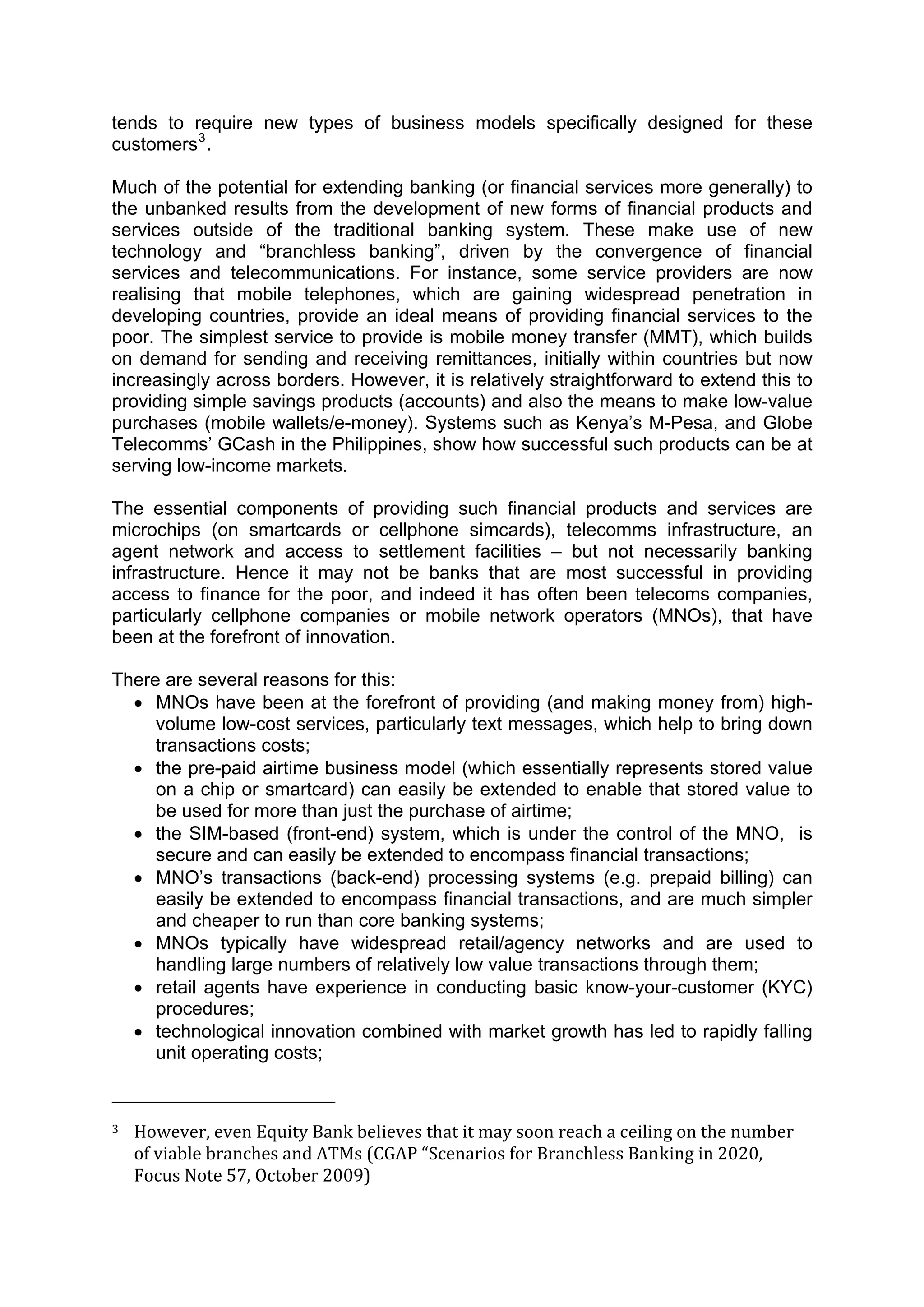
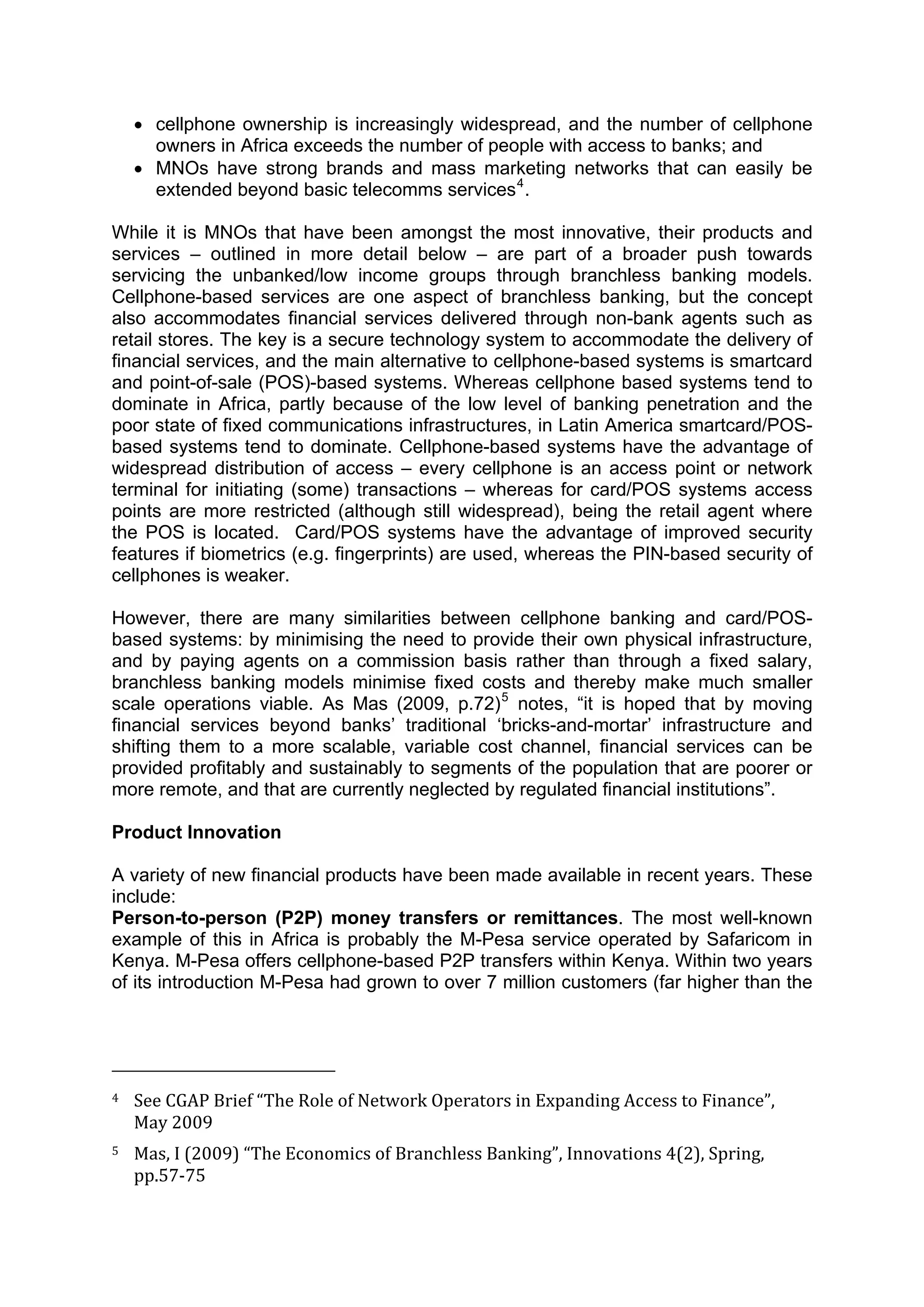
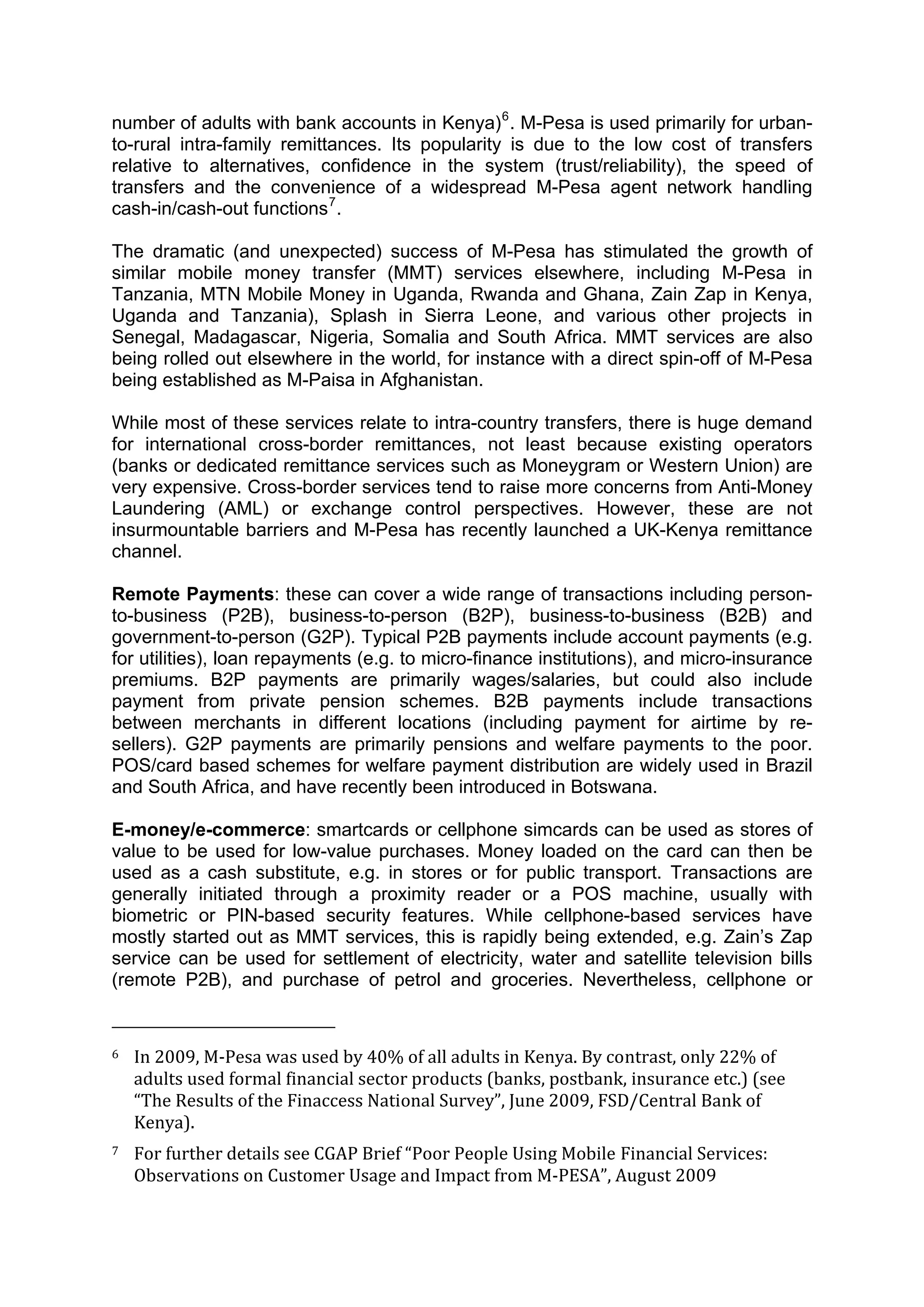
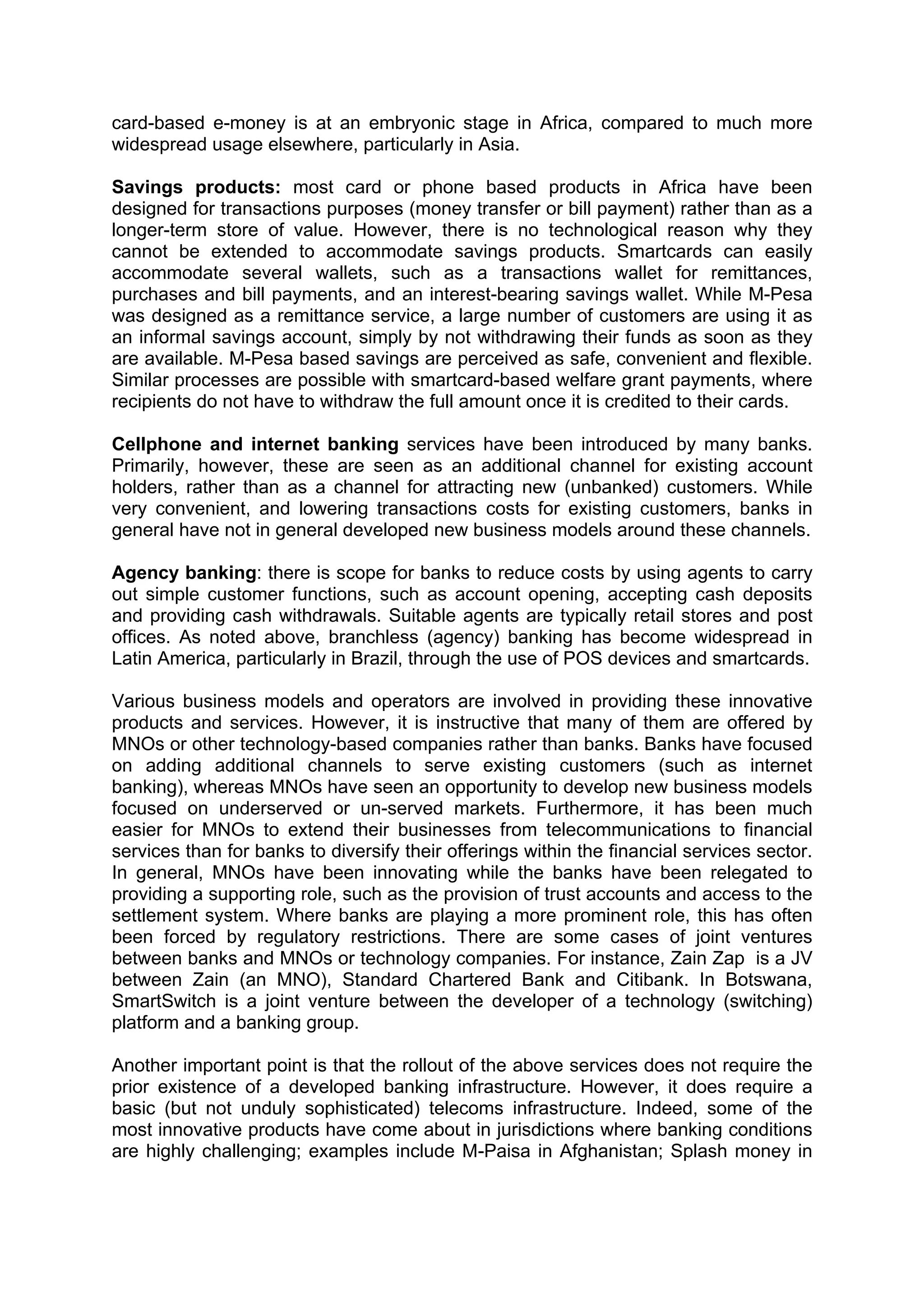
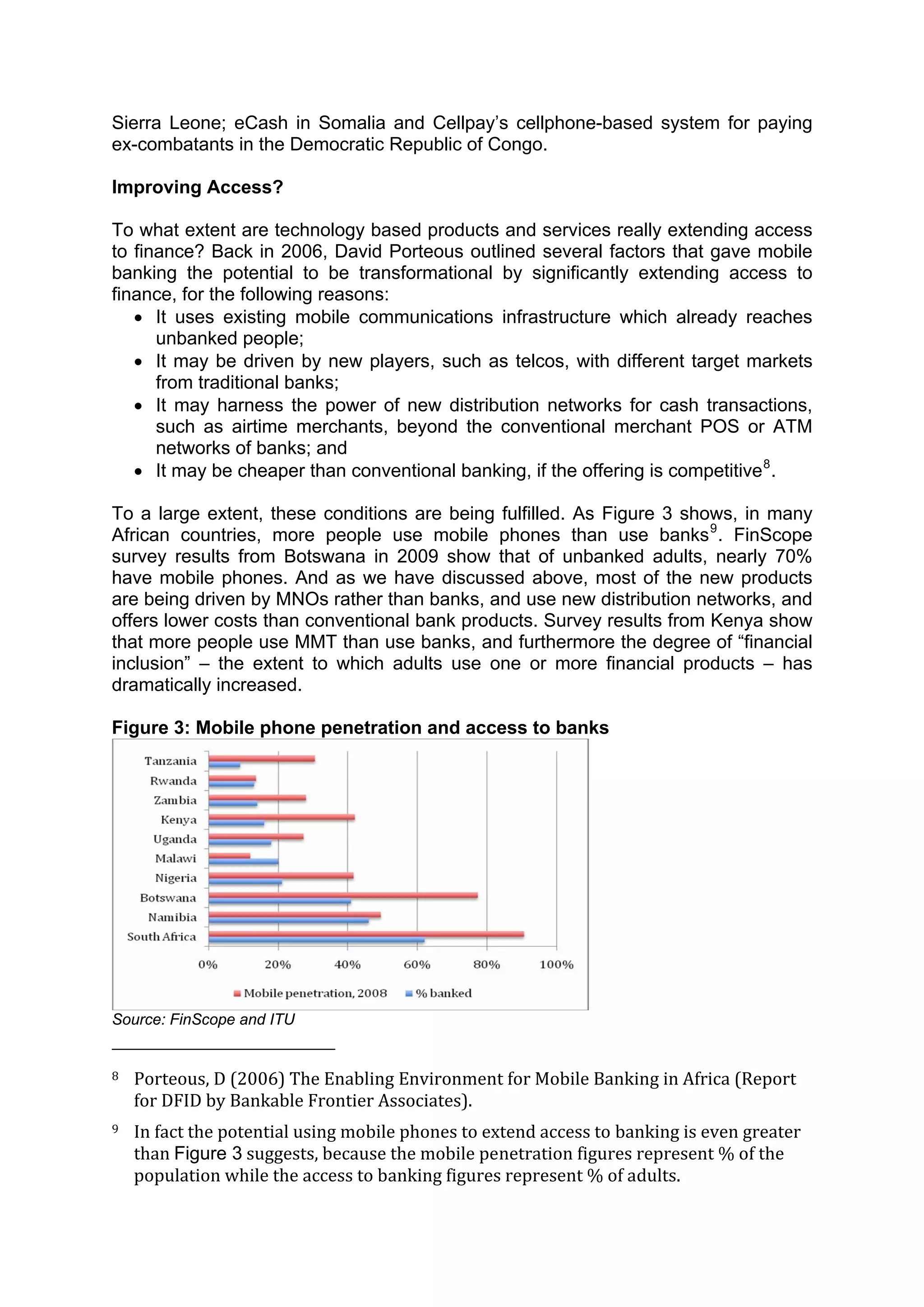
![While few countries yet have sufficient quantitative data to prove the point,
qualitative evidence regarding the types of products and services being offered, and
the nature of the clientele, indicate very strongly that a significant proportion of users
are unbanked. Again from Kenya: in Kibera, a high-density housing area of Nairobi,
with 1 million people, there are no banks, but there are 40 M-Pesa agents providing
basic financial services to the population 10 . Perhaps noting developments elsewhere
in East Africa, the Governor of the Bank of Rwanda has also called for innovative
banking products. Governor Kanimba “has challenged bankers to think out of the box
and be innovative when it comes to offering products and services to clients . . . . . .
only innovations and introduction of new products will attract clients to access
financial services. [He] said that although banks were rolling out new branches
across the country, it was equally important for the banking sector to complement
these expansion programmes with increased product innovation and
diversification” 11 .
It is also clear that development agencies see a great deal of potential in mobile and
branchless banking in advancing access to finance. The Gates Foundation has put
$350 million behind its “Financial Services for the Poor” initiative, partly because of
the opportunities now on offer, whereby “New technologies and innovative
partnerships make it possible to create a “next-generation” banking system”. Other
donors and development agencies – notably the World Bank, CGAP and DFID –
have been actively involved in promoting access to finance using innovative product
and services.
Implications for Regulators
Innovation in branchless banking and cellphone-based products and services raises
new and important issues for regulators, and the regulatory response has major
implications for how the industry develops. The key issues that regulators have to
face are:
• To what extent should these new products and services be regulated as
banking operations, or as other financial service operations (such as payments
service providers)?
• Balancing the need for prudential regulation with consumer protection;
• Implementing anti-money laundering (AML) regulations; and
• Balancing a supportive enabling environment with the need to manage and
reduce risk.
Regulatory structures vary considerably and there is no uniform approach across
jurisdictions in Africa. This is partly a reflection of the speed of innovation: technology
and business models are changing so fast that issues have arisen that were not
anticipated when current regulatory environments were established. In such a fluid
and undefined environment, different regulators react in different ways, depending
their assessment of the issues noted above. A recent study of the potential of
10 CGAP Brief “Poor People Using Mobile Financial Services: Observations on Customer
Usage and Impact from M‐PESA”, August 2009
11 The New Times (Rwanda), November 5, 2009.](https://image.slidesharecdn.com/technicalreport-productinnovationandaccesstofinanceinafrica-110620083042-phpapp01/75/2009-Product-Innovation-and-Access-to-Finance-USAID-11-2048.jpg)
